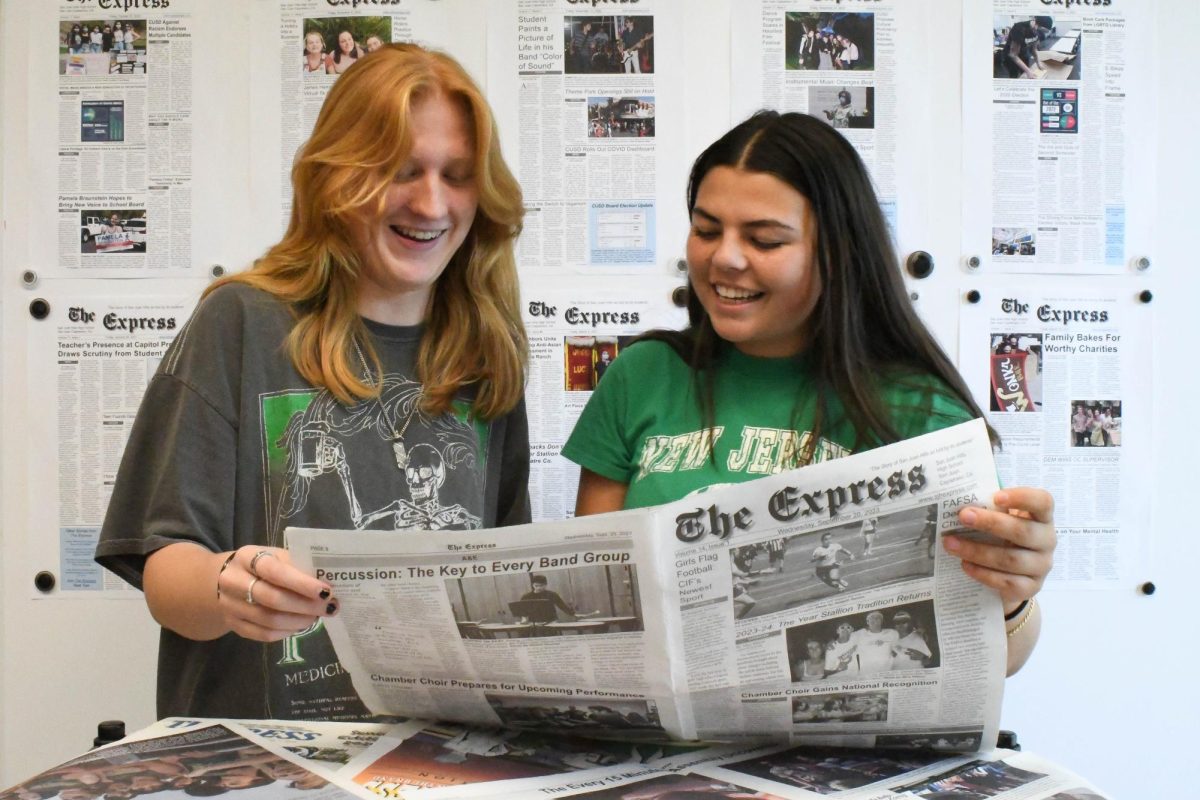It’s that time of the year! The Express is officially turning thirteen years old as of this fall.
Thirteen is infamous for being a turning point in many people’s lives. This age is defined as the beginning of adolescence in which a person starts to mature into their fullest potential. It’s certainly safe to say that these attributes coincide with The Express, which has undergone several changes in the last thirteen years, and is only going to change more.
In 2007, San Juan Hills opened as the sixth high school in the Capistrano Unified School District.
In 2010, just three years later, Bill Kaiser established The Express and took on the position of media advisor.
“I just really wanted San Juan Hills to have its own student newspaper like I did when I was in high school. It was one of the greatest things for me when I was a junior and senior in high school, and the community that we had—it was like a group of friends and a little family,” said Kaiser.
With the new-school fever that spread throughout campus and the very first graduating senior class, interest levels peaked in 2010.
“When we were a new school, the campus was so excited because it was new and they wanted to have all these things like a school newspaper and so when we came out there was this wild buzz,” said Kaiser.
This year, Kaiser returns for his 24th year as the media advisor of The Express.
Another significant point in The Express’ upbringing was in 2018, when the newspaper staff faced censorship after an incredibly controversial article was printed. The article, Relationships and Sex in High School, covered several stigmatized topics in today’s sex culture including abstinence, teen pregnancy, abusive relationships, and LGBTQ+ relationships.
The boldness of this article coupled with the severe backlash from various members in the community led to an all time high in interest levels for the paper.
Shortly after this point of contention, the world was forced indoors due to the 2020 COVID-19 pandemic. The pandemic brought about both predictable downsides and shocking benefits for The Express.
On one hand, The Express won numerous Best of SNO awards during this period of isolation.
“Our team was used to working independently because that’s the way I want to have the class run—where everybody here is able to work independently and use their own voice to express their opinions freely like we do in a free democracy,” said Kaiser.
On the other hand, the newspaper lost much of its previous relevancy once school resumed its in-person classes. After a two year hiatus from standard print editions and in-person newspaper deliveries, many students are still unaware of The Express’ existence as a whole.
This lack of community interest in student journalism is still felt today, and is becoming an even greater issue in terms of funding.
In previous years, the primary source of income came from selling ads to willing investors. But, many of these connections were lost during the pandemic, and companies have shifted their focus to social media rather than student newspapers.
Not only are ad investments at an all time low, but this year, only 1% of parents donated to the newspaper during back to school registration.
Without the appropriate funding, The Express is unable to continue distributing print editions which cost anywhere from $500-$900 per spread—not to mention the $800 it costs to keep the online site up and running.
An even greater concern is the fact that without print editions and frequent updates to the online site, The Express may cease to exist entirely.
This troubling domino effect, rather than rattling this year’s Co Editors-In-Chiefs, Celeste Cariker (12) and Claire Stafford (11), has instead motivated them to spread the word about student journalism across campus.
“Last year working on the newspaper, it was really apparent to me that no one knew we existed. This year, I am working on fundraising more money so we can release six print editions. Hopefully the stallions will appreciate that,” said Cariker.
“Our goal is to become more active on social media and release more print editions so that the students here know that we have a newspaper. This year, we’re trying to make the newspaper’s existence more in your face,” said Stafford.
It is up to students, teachers, and parents alike to keep student journalism alive. Although they are often overlooked, the young voices of today will eventually become the voices of the future. With that in mind, we as a community are presented with the ability to uplift these voices before it is too late. Change should not wait until the future, it is needed right now.








